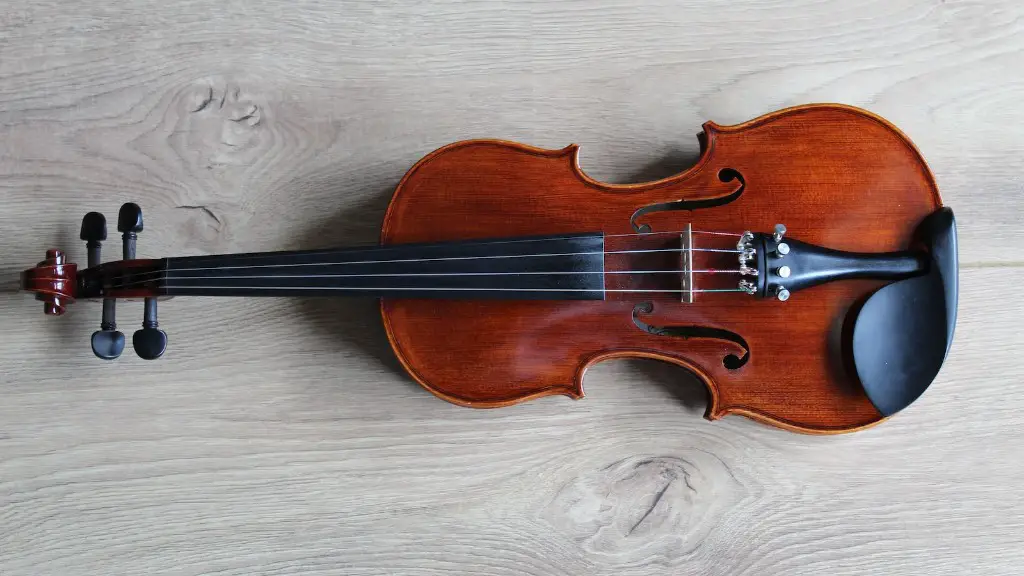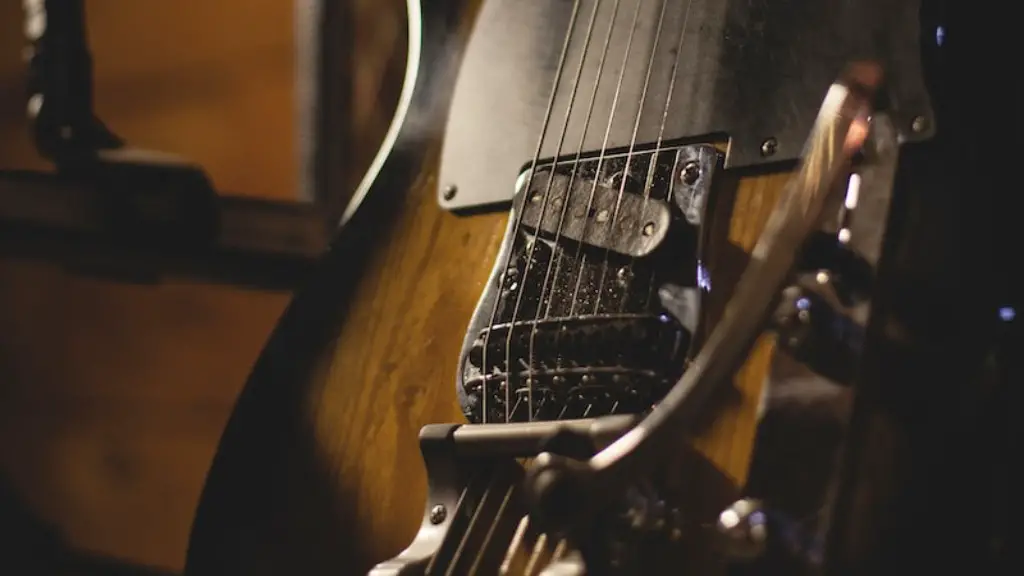The trumpet is a brass instrument used in many genres of music. It is easily recognizable due to its bright, piercing sound and its characteristic shape. To understand how a trumpet works, it is important to know the different parts of the instrument and how they work together.
The trumpet consists of three main parts: the mouthpiece, the body, and the valves. The mouthpiece is the part that is placed in the player’s mouth. It has a cup-shaped rim and a tapered shank that fits into the leadpipe of the body. The body of a trumpet consists of three sections: the leadpipe, tuning slide, and bell. The valves are located between each section and are used to change the length of tubing in order to change pitches.
When a player blows into their trumpet’s mouthpiece, air is pushed through the instrument’s tubing. This causes vibrations which create sound waves that travel out through the bell. By pressing down on one or more valves at a time, players can alter these vibrations to produce different notes.
Playing a trumpet requires skill and practice but understanding how it works can help make it easier for players to get started. With enough practice and dedication, anyone can learn to play this iconic instrument!
Anatomy Of A Trumpet (How A Trumpet Works)
Trumpets are one of the oldest and most popular instruments in the world. It consists of a long metal tube with three valves, a mouthpiece and bell at the end. The valves control the flow of air through different pathways that determine the pitch of the instrument. The mouthpiece is where vibrating air is produced when playing and is usually made of rubber or plastic material. Inside the trumpet, there are three slides or pistons that can be pressed down to change the length of tubing and therefore alter the pitch.
When playing, sound is produced when air is pushed through the mouthpiece and vibrates within the tube. As air passes through each valve, it takes a different path that lengthens or shortens depending on which valve has been pressed down. This alters the amount of time it takes for vibrations to reach out through the bell at the end and create sound waves.The shape and design of a trumpet’s bell also affects how much sound can be projected. Finally, mutes can be placed in front of or inside of trumpets to alter their tone further.
How a Trumpet Works
A trumpet produces sound through the vibrations of its metal body and air column. The player’s lips vibrate against a mouthpiece which causes a wave of air to travel through the trumpet’s tubing. This wave of air then sets up vibrations in the metal body, producing sound in the trumpet. The sound is shaped by the player’s mouth and tongue, as well as by valves which can be used to lengthen or shorten the length of tubing, thereby changing the pitch of the instrument.
The trumpet is a brass instrument and has been used in music since ancient times. It is one of the most versatile instruments in any orchestra or band, capable of producing loud, high-pitched sounds as well as soft, subtle tones. The trumpet is also well-suited for jazz and blues music, where it can be heard soloing or accompanying other instruments. With careful practice and proper technique, a trumpet player can create beautiful music that will delight both musicians and listeners alike!
How to Play the Trumpet
The trumpet is a brass instrument known for its bright, loud sound. It is one of the oldest instruments in history and has been used in music since the 15th century. Playing the trumpet requires a good understanding of how it works and how to use it properly.
To start playing, hold the trumpet in your left hand with your right hand around the mouthpiece. Place your lips on the mouthpiece and blow into it. You will need to use your diaphragm muscles to produce a sound. The more air you use, the louder and more powerful the sound will be. As you blow into the mouthpiece, use your fingers to press down on different notes that are written on the trumpet’s body. This will create different pitches as you play.
Practicing regularly is essential if you want to master playing the trumpet. Make sure you warm up before playing by practicing long tones and scales slowly at first and gradually working up to faster tempos as you get better at playing. Also, practice with different types of music so that you can become familiar with various styles of playing.
As with any instrument, patience is key when learning how to play the trumpet! Taking time to practice regularly will help you become a better player in no time. With hard work and dedication, anyone can learn how to play this beautiful instrument.
Different Types Of Mouthpieces For The Trumpet
The mouthpiece of a trumpet is perhaps one of the most important components when it comes to playing the instrument. Different types of mouthpieces can produce different sounds, and each trumpet player should find the one that works best for them. The most common types are cup, rim, and backbore mouthpieces.
Cup mouthpieces feature a shallow cup and have a softer sound. This type of mouthpiece is often favored by jazz musicians who want a mellow, warm tone. Rim mouthpieces have a slightly wider rim and provide more resistance than cup mouthpieces, producing a bright sound. They’re popular with players who prefer to emphasize high notes in their performances.
Backbore mouthpieces are designed with larger throats than other types and they produce an even brighter sound than rim pieces. These are favored by classical trumpeters who want to emphasize notes in the upper register. All three types can vary in size and shape, so it’s important for trumpet players to try out different models until they find the one that best suits their playing style.
Ultimately, choosing the right trumpet mouthpiece is essential for any musician striving to produce the perfect sound.
Different Types Of Valves Used On The Trumpets
Trumpets are built with three valves that control the trumpet’s pitch. The main valve is the main tuning slide, which is used to tune the trumpet and adjust its length. The second valve is the trigger valve, which is used to increase the length of the trumpet’s tube, raising its pitch. Finally, the third valve is a stop valve, which can be used to lower the pitch of a note by shortening the tube length. All three valves are controlled by pressing down on them with your fingers.
The main tuning slide typically has two settings: open and closed. When open, it increases the length of the tube and raises its pitch. When closed, it decreases the length of the tube and lowers its pitch. The trigger valve can also be adjusted in both directions to raise or lower a note’s pitch. The stop valve works similarly but has only one setting – when pressed down it decreases the tube length and lowers a note’s pitch.
These three valves work together to create different notes on a trumpet. By adjusting their settings, players can vary their tone and range depending on what type of music they are playing.
Care and Maintenance of the Trumpets
Maintaining your trumpet is essential for keeping it in top condition and sounding great. Regular cleaning and oiling of the valves, slides, and moving parts will ensure that the instrument remains in optimal working order. Additionally, regular inspections of the instrument should be done to detect any potential repairs or adjustments that may be needed.
To clean the trumpet, first use a warm cloth to wipe down the exterior surface. Make sure to pay special attention to areas around valves and slides as these can be particularly prone to dirt buildup. A light lubricant should then be applied to each of the valves and slides before they are reassembled. The mouthpiece should also be wiped down with a damp cloth before being reassembled on the instrument.
Inspections should also be done regularly on your trumpet, particularly if it has been used heavily or has been exposed to extreme temperatures or humidity levels. It is important to check for any signs of wear or damage such as dents, scratches, or rust spots on the exterior as well as any damage done to interior components like pistons and springs. If any of these issues are detected, repairs should be made as soon as possible.
Finally, use a soft cloth to polish the entire instrument after each cleaning session. This will help keep its bright finish and make sure that it looks its best for performances. Proper care and maintenance will ensure that your trumpet remains in top condition for many years
The End
To conclude, the trumpet is a versatile and powerful instrument that has been used for centuries in various musical styles. It is a brass instrument that is made up of three main components: the mouthpiece, the body and the valves. The player produces sound by vibrating their lips against the mouthpiece, and then using the valves to control the length of tubing which determines the pitch of the sound. The trumpet can also be used to produce a wide range of dynamics, articulations, and timbres which gives it its unique character. The trumpet is an incredibly expressive instrument that can be used to create beautiful music.





